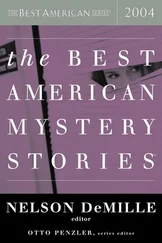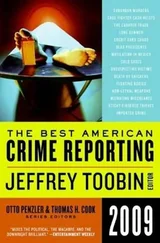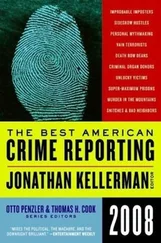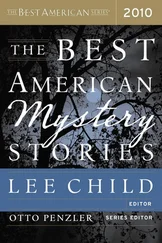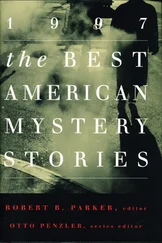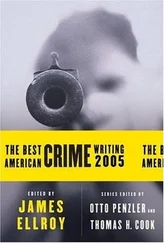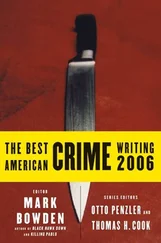Over the past decade and a half, both directors and writers in the United States have become increasingly aware of the hard-boiled genre, reinterpreting old noir favorites such as James M. Cain’s The Postman Always Rings Twice (first filmed in 1946 and remade in 1981 from a taut David Mamet script); updating novels by hard-boiled writers of the 1950s into dazzling screenplays, as Donald Westlake did with Jim Thompson’s The Grifters (published in 1963, filmed in 1990); or creating entirely new works so immoderately vicious that they exceed by a considerable degree the old conventions of cinema noir. The current high priest of designer violence is director and writer Quentin Tarantino, who plunders the plots of old films and 1940s pulp fiction and reshapes them into a purely 1990s product that resonates with aberrant and often stomach-churning brutality. The idea behind the work of auteurs such as Tarantino is that cinematic violence is both fun and cathartic, a concept that has a certain validity. In the process, however, characters lose their humanity and become mere symbols, and as Dashiell Hammett once implied in a letter to Cap Shaw, it is difficult to relate to a symbol no matter how cleverly or wittily the symbol behaves.
A final word about the stories we have selected for inclusion.
The reader will note that we have taken several from the 1930s and several from the 1950s, while other decades are more sparsely represented. The imbalance is deliberate. The 1930s were the single most important decade in the form’s development, thanks to Hammett, Chandler, Shaw, and numerous others. The 1950s was its renaissance decade, the first in which mystery-genre specialists were able to shed some of the restrictions of style and content created by hard-boiled crime writing’s pulp origins and stretch its limits in inventive new ways. In terms of volume, more first-rate works were published during that ten-year span than during any other.
The 1990s may prove to be the form’s third most important decade. Certainly the novels and stories that have been published thus far foreshadow another renaissance period in which contemporary authors will expand its boundaries even further. It may well be that editors of future anthologies of hard-boiled stories will want to give much greater emphasis than we have to this final decade before the millennium. If so, then its promise will have been fulfilled.
Dashiell Hammett
(1894–1961)
As Raymond Chandler states in his essay “The Simple Art of Murder,” Samuel Dashiell Hammett “wrote at first (and almost to the end) for people with a sharp, aggressive attitude to life. They were not afraid of the seamy side of things; they lived there. Violence did not dismay them; it was right down their street.”
To put it another way, Hammett was the trailblazer, the founding father of the hard-boiled form. Every other writer of hard-boiled fiction, past and present, including those who have made major refinements or opened important new veins, is a prospector mining the goldfields that he established.
There are those who would argue that Sam Spade, hero of the single most influential private-eye novel, The Maltese Falcon (1930), is Hammett’s greatest character, while others opt for the mildly inebriate husband-and-wife team, Nick and Nora Charles, of The Thin Man (1934). But most aficionados — the editors of this volume included among them — accord that distinction to the Continental Op. Fat, fortyish, and the Continental Detective Agency’s toughest and shrewdest investigator, the nameless Op was based on fames Wright, assistant superintendent of the Pinkerton Detective Agency in Baltimore, for whom Hammett worked during his fourteen-year stint (1908–1922) with the agency. The Op’s methods, if not his cases, are based on real private-investigative procedures of the period. For these reasons, the Op stories are more starkly realistic than any of Hammett’s other fiction.
The first Op story, “Arson Plus,” appeared in the October 1, 1923, issue of Black Mask under the pseudonym Peter Collinson. Two dozen Op stories followed over the next eight years; the series ended with “Death and Company” in the November 1930 issue. Four of the stories constituted The Dain Curse, though they were published separately rather than as a conventional serial, and another four separate stories made up Red Harvest. Both novels were published in book form in 1929. The remaining Op yarns were reprinted by Ellery Queen in a series of digest-size paperbacks in the late 1940s and early 1950s, and several were later collected in The Big Knockover (1966) and The Continental Op (1974), the only two volumes of Hammett’s stories to be authorized by his close friend and literary executor, Lillian Heilman.
“The Scorched Face” was first published in the May 1925 issue of Black Mask. (Curiously, in a blurb for the story, editor Philip C. Cody referred to the Op as “the Continental Sleuth.”) This is arguably one of the three or four best Op tales, for not only does it have, in the words of Ellery Queen, “savagery, style, sophistication, sleuthing, and sex,” but it offers three additional S ’s: a sharp surprise stinger in its final sentence.
B. P.
“We expected them home yesterday,” Alfred Banbrock ended his story. “When they had not come by this morning, my wife telephoned Mrs. Walden. Mrs. Walden said they had not been down there — had not been expected, in fact.”
“On the face of it, then,” I suggested, “it seems that your daughters went away of their own accord, and are staying away on their own accord?”
Banbrock nodded gravely. Tired muscles sagged in his fleshy face.
“It would seem so,” he agreed. “That is why I came to your agency for help instead of going to the police.”
“Have they ever disappeared before?”
“No. If you read the papers and magazines, you’ve no doubt seen hints that the younger generation is given to irregularity. My daughters came and went pretty much as they pleased. But, though I can’t say I ever knew what they were up to, we always knew where they were in a general way.”
“Can you think of any reason for their going away like this?”
He shook his weary head.
“Any recent quarrels?” I probed.
“N—” He changed it to: “Yes — although I didn’t attach any importance to it, and wouldn’t have recalled it if you hadn’t jogged my memory. It was Thursday evening — the evening before they went away.”
“And it was about—?”
“Money, of course. We never disagreed over anything else. I gave each of my daughters an adequate allowance — perhaps a very liberal one. Nor did I keep them strictly within it. There were few months in which they didn’t exceed it. Thursday evening they asked for an amount of money even more than usual in excess of what two girls should need. I wouldn’t give it to them, though I finally did give them a somewhat smaller amount. We didn’t exactly quarrel — not in the strict sense of the word — but there was a certain lack of friendliness between us.”
“And it was after this disagreement that they said they were going down to Mrs. Walden’s, in Monterey, for the weekend?”
“Possibly. I’m not sure of that point. I don’t think I heard of it until the next morning, but they may have told my wife before that.”
“And you know of no other possible reason for their running away?”
“None. I can’t think that our dispute over money — by no means an unusual one — had anything to do with it.”
Читать дальше

